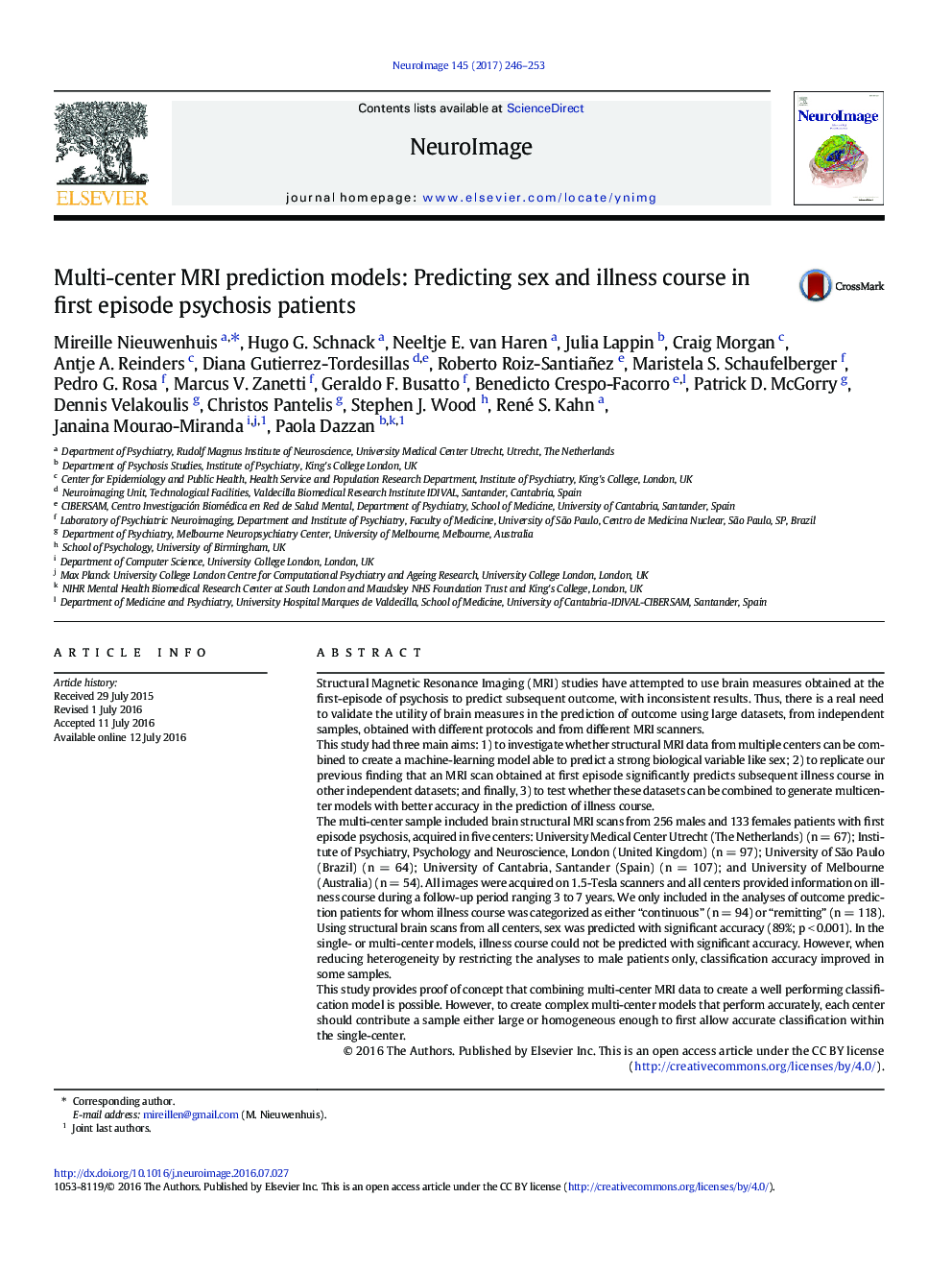| کد مقاله | کد نشریه | سال انتشار | مقاله انگلیسی | نسخه تمام متن |
|---|---|---|---|---|
| 5631576 | 1406499 | 2017 | 8 صفحه PDF | دانلود رایگان |

- Multi-center neuroimaging data can be combined to classify clear biological outcome.
- Classification is only significant in centers with similar illness outcome definition.
- Multi-center models can increase performance of smaller and heterogeneous samples.
- Multi-center studies should use large samples and standardized clinical information.
- Multi-center models have the potential to yield clinically useful predictions.
Structural Magnetic Resonance Imaging (MRI) studies have attempted to use brain measures obtained at the first-episode of psychosis to predict subsequent outcome, with inconsistent results. Thus, there is a real need to validate the utility of brain measures in the prediction of outcome using large datasets, from independent samples, obtained with different protocols and from different MRI scanners.This study had three main aims: 1) to investigate whether structural MRI data from multiple centers can be combined to create a machine-learning model able to predict a strong biological variable like sex; 2) to replicate our previous finding that an MRI scan obtained at first episode significantly predicts subsequent illness course in other independent datasets; and finally, 3) to test whether these datasets can be combined to generate multicenter models with better accuracy in the prediction of illness course.The multi-center sample included brain structural MRI scans from 256 males and 133 females patients with first episode psychosis, acquired in five centers: University Medical Center Utrecht (The Netherlands) (n = 67); Institute of Psychiatry, Psychology and Neuroscience, London (United Kingdom) (n = 97); University of São Paulo (Brazil) (n = 64); University of Cantabria, Santander (Spain) (n = 107); and University of Melbourne (Australia) (n = 54). All images were acquired on 1.5-Tesla scanners and all centers provided information on illness course during a follow-up period ranging 3 to 7 years. We only included in the analyses of outcome prediction patients for whom illness course was categorized as either “continuous” (n = 94) or “remitting” (n = 118).Using structural brain scans from all centers, sex was predicted with significant accuracy (89%; p < 0.001). In the single- or multi-center models, illness course could not be predicted with significant accuracy. However, when reducing heterogeneity by restricting the analyses to male patients only, classification accuracy improved in some samples.This study provides proof of concept that combining multi-center MRI data to create a well performing classification model is possible. However, to create complex multi-center models that perform accurately, each center should contribute a sample either large or homogeneous enough to first allow accurate classification within the single-center.
Journal: NeuroImage - Volume 145, Part B, 15 January 2017, Pages 246-253